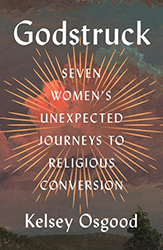The premise of John Efron’s All Consuming: Germans, Jews, and the Meaning of Meat is that meat played a profound role in shaping interactions between Jews and Christians in Germany from the Middle Ages to the modern period. Through his analysis of various cultural artifacts, ranging from photographs, cookbooks, propaganda posters, scientific texts, and children’s books, Efron demonstrates how these interactions influenced the formation of distinctive German Jewish identities and shaped Christian conceptions of Jews as an ethnic group.
The 700-year period that Efron covers is knit together by a dismaying throughline of antisemitic reactions to Jewish dietary customs. Efron illuminates the extent to which German racial hierarchies from the Middle Ages to the present quite often coalesced around harsh judgments regarding how Jews treated their meat at each stage of its production. Medieval and early modern conspiracy theories positing that Jewish butchers purposefully poisoned and dirtied meat that they sold to Christians surfaced in Nazi propaganda that portrayed Jewish butchers as unsanitary and dishonest and promoted the notion that Jewish law sanctioned cruel slaughter practices that threatened the supposed hygienic, civilized, and morally righteous German national character.
Despite the disturbing nature of the antisemitism that Efron shows to be a central component of German reactions to Jewish dietary customs, his book also sheds light on positive relationships between Jews and non-Jews specifically surrounding meat. For example, Efron explains how anti-shechita campaigns in Germany and Switzerland in the nineteenth century sparked mobilization among Christians who viewed bans on kosher slaughter as a threat to religious freedom, an important Enlightenment ideal. Efron’s conclusion alludes to how Jews, Muslims, and Christians in modern Germany have banded together to defend the rights of ethnic minorities to perform slaughter according to their own religious laws.
A highlight of this book is its deep dive into German literary culture relating to Jews and meat. Unfortunately, the advent of print culture in the early modern period paved the way for the production and dissemination of decidedly antisemitic and conspiratorial ethnographic accounts of Jewish dietary customs. On the other hand, print culture allowed German Jews to react creatively to the threat of assimilation that accompanied modernity. For example, in the mid-nineteenth century, German Jewish rabbis and lay scholars published explanatory guides to kashrut in German to address Jewish readers who may not have been fluent in Hebrew but who wanted to understand dietary laws. Similarly, the publication of kosher cookbooks such as Rebekka Wolf’s Cookbook for Jewish Women (1851) exemplifies an innovative response to the growing demand for knowledge of religious food customs among bourgeois women during that time period. Ultimately, Efron shows how print culture helped cultivate a distinctively German Jewish identity around food and cooking that toggled between the preservation of the past and the embrace of modernity.
All Consuming is not suited for squeamish readers, as it contains some graphic descriptions and visual depictions of both kosher and non-kosher slaughter. However, the book’s background information on the biblical and cultural origins of Jewish dietary customs and its engaging use of archival materials make it an exciting read suited for all kinds of audiences, including those with little to no background knowledge of Jewish history and dietary customs.





